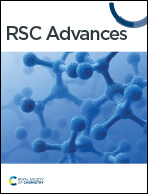Surface modification strategies for improved hemocompatibility of polymeric materials: a comprehensive review
Abstract
Polymeric biomaterials are a widely used class of materials due to their versatile properties. However, as with all other types of materials used for biomaterials, polymers also have to interact with blood. When blood comes into contact with any foreign body, it initiates a cascade which leads to platelet activation and blood coagulation. The implant surface also has to encounter a thromboinflammatory response which makes the implant integrity vulnerable, this leads to blood coagulation on the implant and obstructs it from performing its function. Hence, the surface plays a pivotal role in the design and application of biomaterials. In particular, the surface properties of biomaterials are responsible for biocompatibility with biological systems and hemocompatibility. This review provides a report on recent advances in the field of surface modification approaches for improved hemocompatibility. We focus on the surface properties of polysaccharides, proteins, and synthetic polymers. The blood coagulation cascade has been discussed and blood – material surface interactions have also been explained. The interactions of blood proteins and cells with polymeric material surfaces have been discussed. Moreover, the benefits as well as drawbacks of blood coagulation on the implant surface for wound healing purposes have also been studied. Surface modifications implemented by other researchers to enhance as well as prevent blood coagulation have also been analyzed.

- This article is part of the themed collection: 2024 Reviews in RSC Advances


 Please wait while we load your content...
Please wait while we load your content...